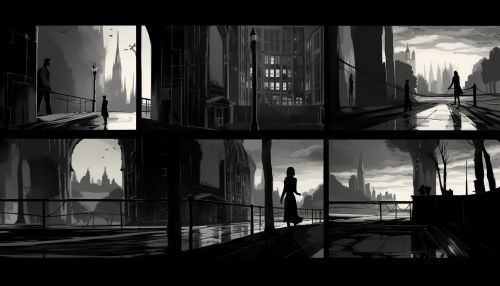The Science of Human Cognitive Styles in Film Directing
Introduction
The interdisciplinary field of human cognitive styles in film directing amalgamates elements from psychology, neuroscience, and film studies. The primary objective of this field is to comprehend how diverse cognitive styles influence the manner in which films are directed and how these styles can be utilized to produce more captivating and efficient films.


Understanding Cognitive Styles in Film Directing
Cognitive styles are indicative of an individual's preferred method of processing information. These styles can be broadly classified into two categories: holistic and analytic. Holistic thinkers tend to perceive situations as an entirety, while analytic thinkers dissect situations into smaller components for analysis. In the realm of film directing, these cognitive styles can significantly impact the way a director approaches the filmmaking process.
For example, a director with a holistic cognitive style might approach a film project with a lucid vision of the overall narrative and aesthetic, and then focus on the details within this larger framework. Conversely, a director with an analytic cognitive style might concentrate on the specifics of each scene and shot, progressively constructing the overall film.


Influence of Cognitive Styles on Storytelling
A director's cognitive style also influences the manner in which a story is narrated in a film. Holistic thinkers often excel at creating immersive narratives, where the audience is drawn into the film's world and experiences the story as a cohesive whole. On the other hand, analytic thinkers may excel at crafting complex narratives with intricate plotlines and character development.
The cognitive style of a director can also impact the pacing and rhythm of a film. Holistic thinkers might create films with a smooth flow, where each scene seamlessly transitions into the next. Analytic thinkers might create films with a more fragmented rhythm, where each scene stands out as a distinct piece of the overall narrative.


Cognitive Styles and Visual Aesthetics
A director's cognitive style can also shape the visual aesthetics of a film. Holistic thinkers might prefer wide shots that capture the entire scene, while analytic thinkers might prefer close-ups that focus on specific details. Similarly, holistic thinkers might use long takes to maintain the continuity of a scene, while analytic thinkers might use quick cuts to highlight different aspects of a scene.


Cognitive Styles and Audience Engagement
Understanding the cognitive styles of the audience is also pivotal in film directing. For instance, a film that caters to holistic thinkers might not resonate with an audience of analytic thinkers, and vice versa. Therefore, directors need to consider the cognitive styles of their target audience when making creative decisions.


Conclusion
The science of human cognitive styles in film directing is an intriguing field that provides valuable insights into the art and craft of filmmaking. By understanding the cognitive styles of both directors and audiences, we can create films that are more engaging, effective, and resonant.
